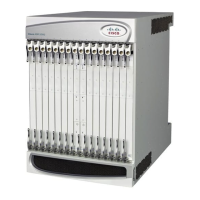Type the maximum lifetime, in days, after which the EDR/NBR/UDR files
should be deleted from the L-ESS base directory or local destinations. The value
must be an integer from 0 through 30.
When the parameter is set to 0, the L-ESS will not delete any files.The L-ESS
deletes the file from base directory after it is pushed to all required destinations.
If the data record file is not pushed to a destination, it will be kept in the base
directory.
Also if files are not getting deleted from local destination paths by the application
that is using them, files will keep on accumulating on these paths causing
unnecessary disk space utilization.
You can control lifetime of the data records with the cleanup script. You must
start the cleanup script by providing path of L-ESS base directory. Refer to the
Using the Cleanup Script section for more details.
Important: If you are configuring the destination for a
mediation device you may want to enable File expiry duration
parameter so that the files are deleted periodically to maintain the disk
space. On the other hand, if it is any other application (e.g. R-ESS)
that takes care of deleting the files after processing, it is advised that
the File expiry duration parameter is not configured (leave its value
as 0 i.e. default).
Type the value, in hours, at which the L-ESS cleanup script should start deleting
the older files. This can be adjusted so that cleanup script does not cause slowing
down of L-ESS.The value must be an integer from 0 through 23.
Important: This parameter can be configured only when the
File expiry duration parameter is set to a non-zero value.
The above mentioned parameters are stored in a configuration file, generic_ess_config, located at <less_install_dir>ess/template
directory. The ess process when started by PSMON will take the configuration from this file. If you would like to change any of
the existing configuration, or set additional parameters, see the L-ESS Server Configuration section in this guide.

